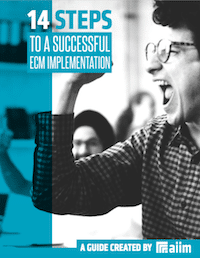The AIIM Blog
Keep your finger on the pulse of Intelligent Information Management with industry news, trends, and best practices.
Electronic Records Management (ERM) | Project Planning and Management
In my current role as Manager of Records Services at the Atlanta Housing Authority (AHA), I am responsible for overseeing the day-to-day operations of the records management and archives section of the agency. In addition, I serve as the Product Owner for our Document Management Automation Squared (DMA2) project. Our DMA2 project encompasses many aspects of electronic records management, including: providing new SharePoint sites, selected migration of records from old SharePoint sites and shared drives, classification, and disposition of electronic records in these repositories, deduplication of records, and training and outreach.
Share
Enterprise Content Management (ECM) | Project Planning and Management
Making an ECM implementation work requires planning and attention to detail. At first blush, it may look like any other technology implementation, but it's far from it. ECM is a complex set of technologies that work together. The best way to create the right solution is to identify organizational goals and priorities. Common drivers include enabling easy access and retrieval of content, as well as, reducing risk and meeting regulatory requirements. I recently put together a short white paper outlining the 14 steps to a successful ECM implementation. I've compiled the finer points into a checklist, designed to help guide your organization through the process of implementing ECM.
Share

Making an ECM implementation successful requires planning and attention to detail. The best way to create the right solution is to identify organizational goals and priorities. Learn how to manage a successful implementation in our free guide.
Project Planning and Management
1. Hear the Customer’s Voice Identify the internal and external customers that will give thumbs up or down on your deliverables. Prove that you’ve heard what they’ve said. In meetings, write down important, direct quotes. Subsequently, prove to them that you were listening by demonstrating how you addressed that specific concern. When everyone on the team is noting these types of issues, gather them in a list, prioritize them, and keep it in view of every team member. During technical discussions, particularly those involving user experience issues, refer to items in this list to advance or reduce points of view. Identify when the customer is asking for mutually exclusive solutions and clearly explain why one or the other option can be delivered but not both. No voice should be louder than the customer’s; the project team must hear it clearly and accurately.
Share